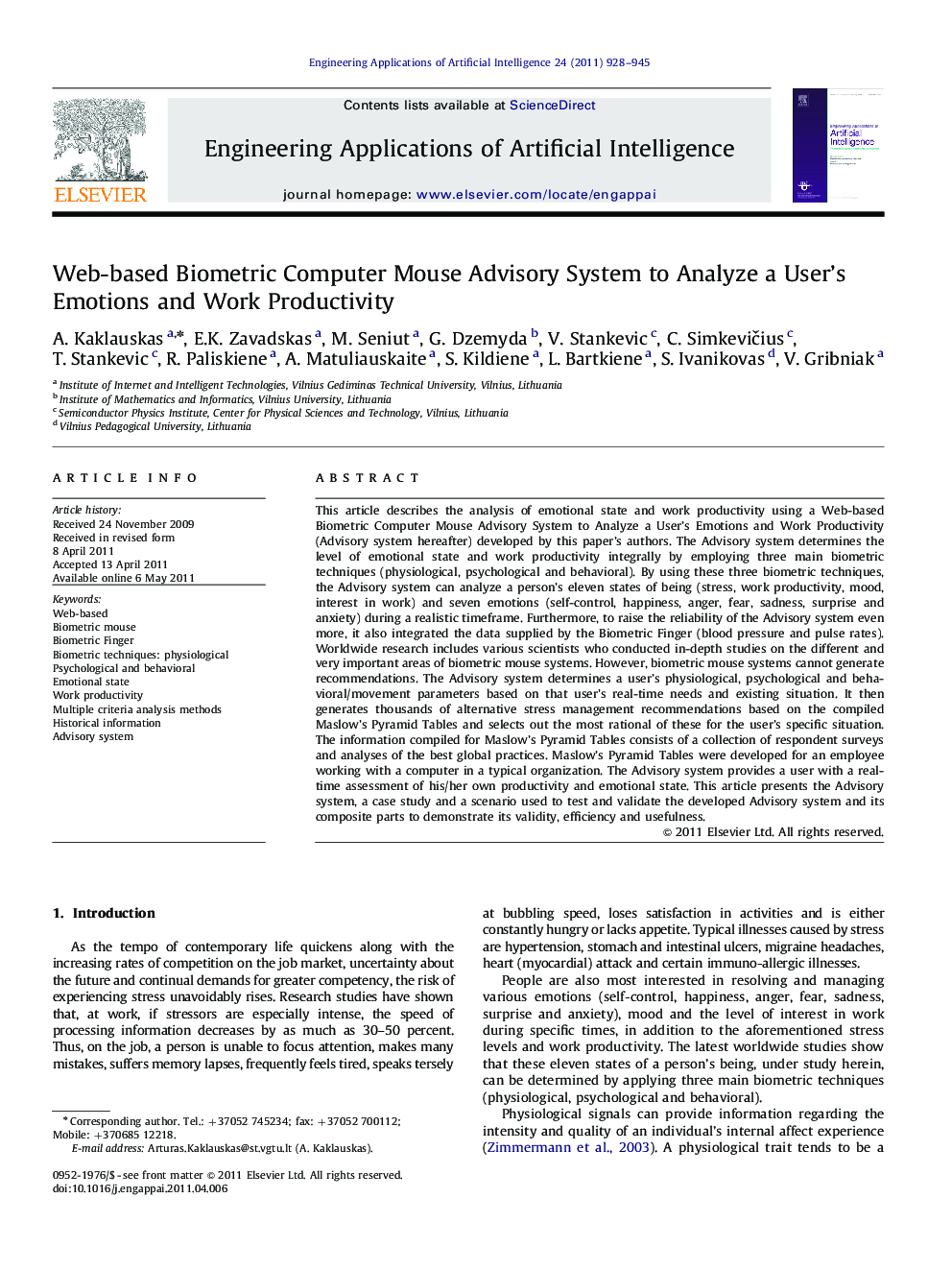| Article ID | Journal | Published Year | Pages | File Type |
|---|---|---|---|---|
| 381325 | Engineering Applications of Artificial Intelligence | 2011 | 18 Pages |
This article describes the analysis of emotional state and work productivity using a Web-based Biometric Computer Mouse Advisory System to Analyze a User's Emotions and Work Productivity (Advisory system hereafter) developed by this paper's authors. The Advisory system determines the level of emotional state and work productivity integrally by employing three main biometric techniques (physiological, psychological and behavioral). By using these three biometric techniques, the Advisory system can analyze a person's eleven states of being (stress, work productivity, mood, interest in work) and seven emotions (self-control, happiness, anger, fear, sadness, surprise and anxiety) during a realistic timeframe. Furthermore, to raise the reliability of the Advisory system even more, it also integrated the data supplied by the Biometric Finger (blood pressure and pulse rates). Worldwide research includes various scientists who conducted in-depth studies on the different and very important areas of biometric mouse systems. However, biometric mouse systems cannot generate recommendations. The Advisory system determines a user's physiological, psychological and behavioral/movement parameters based on that user's real-time needs and existing situation. It then generates thousands of alternative stress management recommendations based on the compiled Maslow's Pyramid Tables and selects out the most rational of these for the user's specific situation. The information compiled for Maslow's Pyramid Tables consists of a collection of respondent surveys and analyses of the best global practices. Maslow's Pyramid Tables were developed for an employee working with a computer in a typical organization. The Advisory system provides a user with a real-time assessment of his/her own productivity and emotional state. This article presents the Advisory system, a case study and a scenario used to test and validate the developed Advisory system and its composite parts to demonstrate its validity, efficiency and usefulness.
